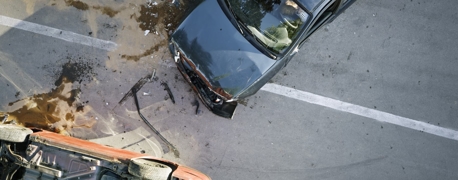NHTSA Tire Repair Guidelines

According to the National Highway Traffic Safety Administration (NHTSA), there is only one safe way to repair a punctured tire: using a combination plug and patch technique. Despite a broad awareness campaign and devastating injuries resulting from improper tire repairs, many individuals and companies continue to repair tires improperly, leaving unsuspecting drivers at risk. "Blowout" accidents, or sudden tire deflation, can have costly consequences.
For example, on September 24, 2015, a passenger van carrying 24 people blew out a tire on the highway, causing it to overturn on I-69. Multiple ambulance agencies were required to transport the 24 injured passengers, 1 of whom died.
Another incident on I-10 resulted in a chain reaction crash that injured 4 drivers. In total, the NHTSA reports that over 23,000 crashes occur annually because of tires blowing out.
There are three methods that can be used to repair a punctured tire, yet only one is sanctioned by the NHTSA as being acceptably safe. The three methods are:
- Plug-Only Repairs
- Patch-Only Repairs
- Combination Repair
Make no mistake, proper tire repair may be the only thing standing between a motorist and a serious accident.
Plug-Only Repairs
When conducting a plug-only repair, the tire technician inserts a woven cord plug through the outside of the tire. When the insertion tool is removed, the cord remains behind, stopping up the hole. While tires repaired in this manner may hold air for months or even years, the NHTSA does not endorse this repair because it allows the tire to deteriorate.
This kind of damage may not be evident until it's too late: internal deterioration has been shown to greatly increase the risk of tread separation which, in turn, has caused many accidents and increases the likelihood of a vehicle rollover when a car or truck is involved in an accident.
Patch-Only Repairs
When performing a patch-only repair, a tire technician must remove the wheel from the rim in order to find the source of a puncture on the tire's interior. Once the area is ready, cement is applied to a patch, the patch is placed over the hole, and the surrounding area is either stitched or rolled. While superior to a plug-only repair, patch-only repairs are still not optimally safe because they allow air and moisture to infiltrate the tire through the exterior hole.
Combination Repair
According to the NHTSA, this type of repair is the only acceptably safe way to repair a punctured tire. When performing a combination repair, technicians locate the original puncture and clean it out to prepare it for plugging. Afterward, the area surrounding the hole on the tire's interior is prepared to bond with a patch, and a patch with an attached plug is placed over the hole. The patch bonds to the inside of the tire, preventing the escape of air. This is proper tire repair and will help prevent future issues.
Contact a Firm That Has Recovered $1 Billion—Call (888) 493-1629
Despite the NHTSA guidelines, many individuals and tire mechanics still perform plug- or patch-only repairs, due to their lower cost and quick turnaround time. If you have been injured in a car accident or truck accident and you suspect its cause was an improperly repaired tire, you may be entitled to compensation.
Contact a vehicle accident attorney at Arnold & Itkin today for a free consultation regarding your case.
- Categories


